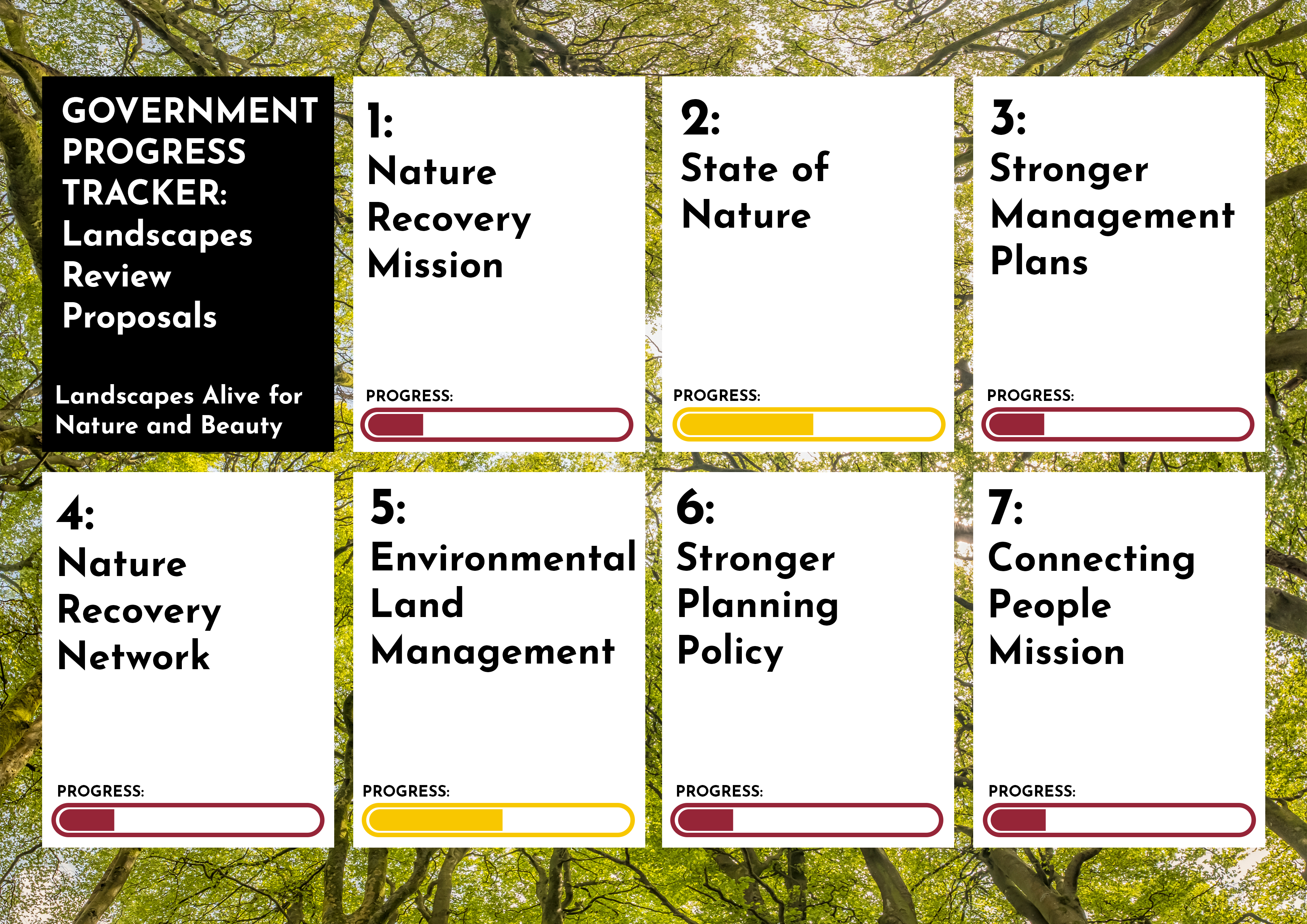March 2023
We are three months on from COP15, when the UK Government, alongside other parties to the Convention on Biological Diversity, formalised its commitment to protect 30% of land and sea for nature by 2030 (known as ‘30x30’). An amendment to the Levelling Up and Regeneration Bill currently in the House of Lords, to be debated this month, will be a key test as to whether Government will match its stated intentions with real action for change.
We are 14 months on from a Government consultation on Protected Landscapes in England where it set out its intentions to reform these landscape designations into strong nature designations. Back then, the Government stated that legal reforms to give Protected Landscapes clear statutory obligations for nature’s recovery, with strengthened accountability and powers to drive action from public bodies and water companies, were critical to delivery of its 30x30 commitment and species abundance targets.
But the Environmental Improvement Plan has signaled that Government may be about to do a disastrous u-turn. It suggested they now believe they can achieve the progress needed via ‘non-legislative’ means. So we put them to the test: what progress has the Government made so far to support nature recovery in Protected Landscapes in England? We assessed progress against the 7 proposals for nature set out in the Protected Landscapes Review published in 2019, and the Government’s own recommendations published in response in January 2022.
It doesn’t bode well. Aside from some work starting to develop an outcomes framework to assess nature in Protected Landscapes, and the very welcome introduction and extension of the Farming in Protected Landscapes scheme, there has been little progress.
And given the worrying sign of retreat in the Environmental Improvement Plan from the legislative reforms crucial for Protected Landscapes to support nature’s recovery, it looks like the Government could actually be going backwards.
This matters because while years pass with no action in policy, damaging decisions are being made on the ground: Exmoor National Park Authority making desperate decisions to sell off valuable SSSI habitat with little regard for nature recovery; an entire water company 5-year planning round passing where, again, they were not required to take account of the Protected Landscapes in investment decisions, leaving rivers and lakes polluted; and Forestry England pressing ahead with plans for plantations not heeding the recommendations of the National Park Authority to support peatland restoration and biodiversity. So it’s no wonder that while Protected Landscapes contain over half of sites designated for nature, only a fraction of these are in ‘favourable condition’.
Amendment 387 to the Levelling Up and Regeneration Bill on the purposes and plans of Protected Landscapes could change all that. It will be debated in the House of Lords over the next few weeks and has wide support from across parties and both Houses of Parliament.
When the Bill was first discussed in the House of Lords in January, a number of peers made the case for this amendment. A subsequent letter to peers from the Bill Minister, Baroness Scott of Bybrook OBE, suggested that the general biodiversity duty created by the Environment Act 2021 could deliver key Glover recommendations without the need for legislation.[1] This is not the case – there’s a world of difference between a general duty to consider biodiversity, and having nature recovery as a driving purpose. This position was reinforced by a recent letter to the Prime Minister from over 35 scientists and experts, including the authors of the Lawton Review (Making Space for Nature: a review of England’s wildlife sites and ecological network) and the Glover Review of Protected Landscapes, calling on the Government to accept this amendment. This follows previous calls from over 45 environmental and access NGOs.
As accepted by the Government just last year, legislation is needed to implement protected landscape reforms. Now the Government has the opportunity to go from red to green, to take forward a huge opportunity to deliver the Government’s own promises, to deliver commitments from the Global Biodiversity Framework agreed at COP15 and to revitalise National Parks and AONBs. We strongly hope they take it.
A briefing on amendment 387, and other amendments that would improve the Levelling Up & Regeneration Bill for nature, can be found here.
[1] Letter to peers from Baroness Scott of Bybrook, entitled ‘Levelling Up and Regeneration Bill – Environment’, dated 27.01.23.
Rose O'Neill is CEO of Campaign for National Parks, Meriel Harrison is Senior Policy Officer at RSPB, Katherine Hawkins is Living Landscapes Manager at the Wildlife Trusts, and Emma Clarke is Policy Officer at Link.
The opinions expressed in this blog are the authors' and not necessarily those of the wider Link membership.

Latest Blog Posts